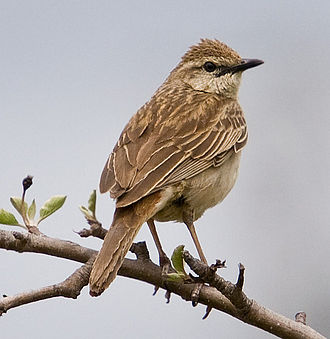“Philomela”
A lark sings through the hellish gloom;
Calls out to her Author.
Praising, loving, she cries her tune,
Piercing my ears to bother.
A lonely cry, muffled and sweet,
Echoes through dark and rain,
Rises to join the thronging fleet
Of souls which do proclaim.
I hear “my Lord” loved and outspread;
My heart grasps to align.
‘ithout wit, this bird of voice has bled
Its faith and kindled mine.
Authorial note:
There are a few ways to read this poem. It is an awkward task for me, a student of literature, to try to unpack my own work, so I will briefly explain a few contexts that can add additional layers but will leave it primarily up to the reader to apply them. In a spirit of the New Critics, however, it can be read without these extra contexts.
Philomela. The name, “Philomela,” means “lover of song” in Latin and was translated from the Greek “Φιλομήλη” by Ovid in his collection of Greek mythology, Metamorphoses. In brief, the myth of Philomela is the story of a girl who is raped and has her tongue cut out by her brother-in-law, Tereus. After she reveals to her sister what has happened by illustrating it in a tapestry, Tereus becomes enraged, and she is turned into a nightingale by the gods. This story has become a showpiece of feminist literary criticism and a demonstration of the “silencing” of women throughout history.
The nightingale and the lark. The female nightingale is mute, and it is only the male counterpart that sings. Traditionally, in English poetry, it only sings at the end of the day or as darkness descends. In contrast, the lark is a bird of the morning and sings as the sun comes up and light illumines the darkness of night. This explains Juliet’s words in Romeo and Juliet, when she says to her new husband, Romeo, “Wilt thou be gone? it is not yet near day: / It was the nightingale, and not the lark, / That pierced the fearful hollow of thine ear” (3.5).
The nightingale as narrator. I will try not to belabour the point, but I wrote the poem with the narrator as the nightingale “Philomela.”
For a little more information about the aspects described, see below:
For a more descriptive account of the myth of Philomela, visit https://www.greekmythology.com/Myths/Mortals/Philomela/philomela.html or Book 6 of Metamorphoses.
See https://web.colby.edu/ovid-censorship/censorship-in-ovids-myths/philomela-ovid-silencing-censorship/ for a feminist take on the myth of Philomela.
See https://www.jstor.org/stable/40624200 for a description of the symbolic use of the lark and the nightingale in English poetry.

